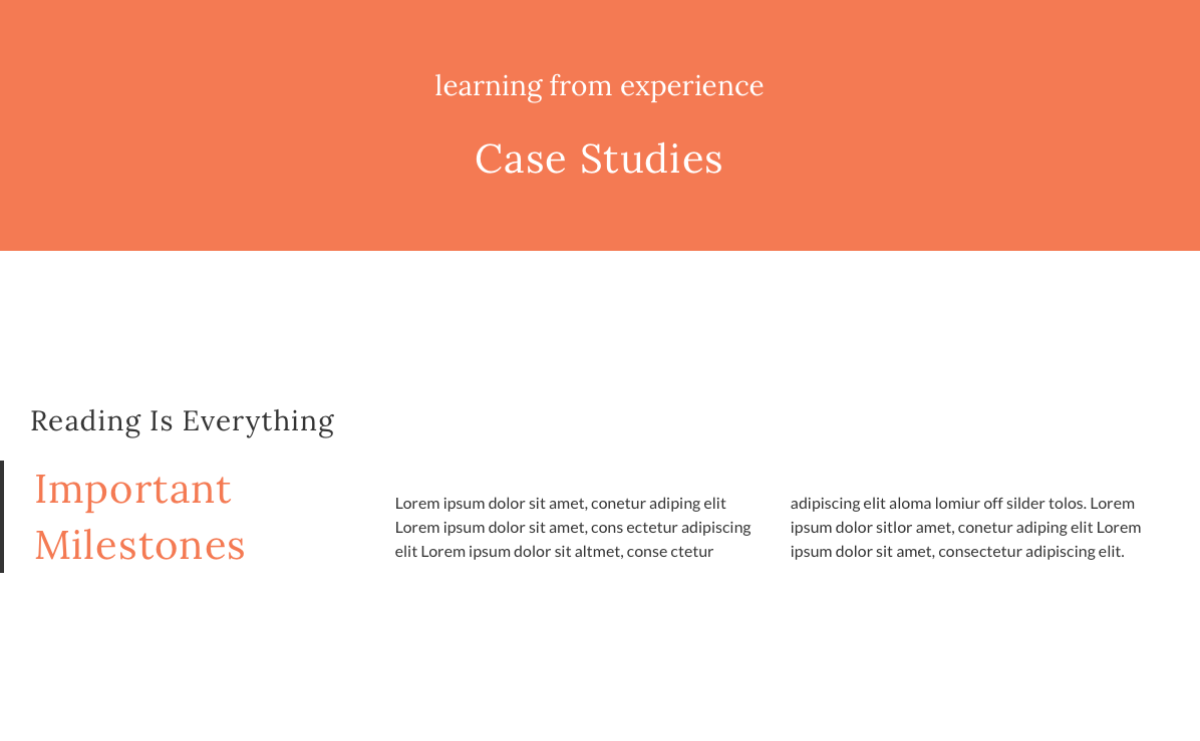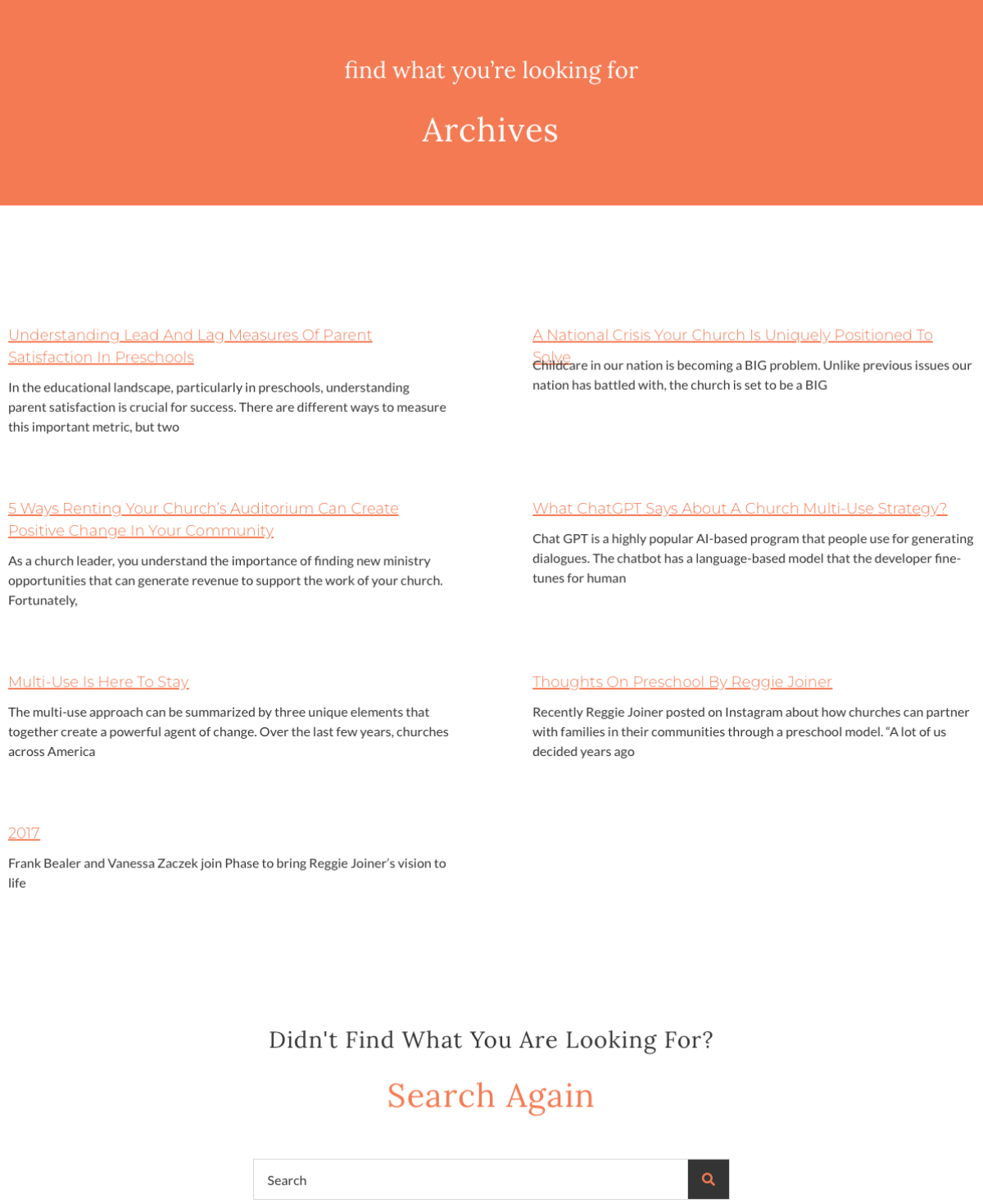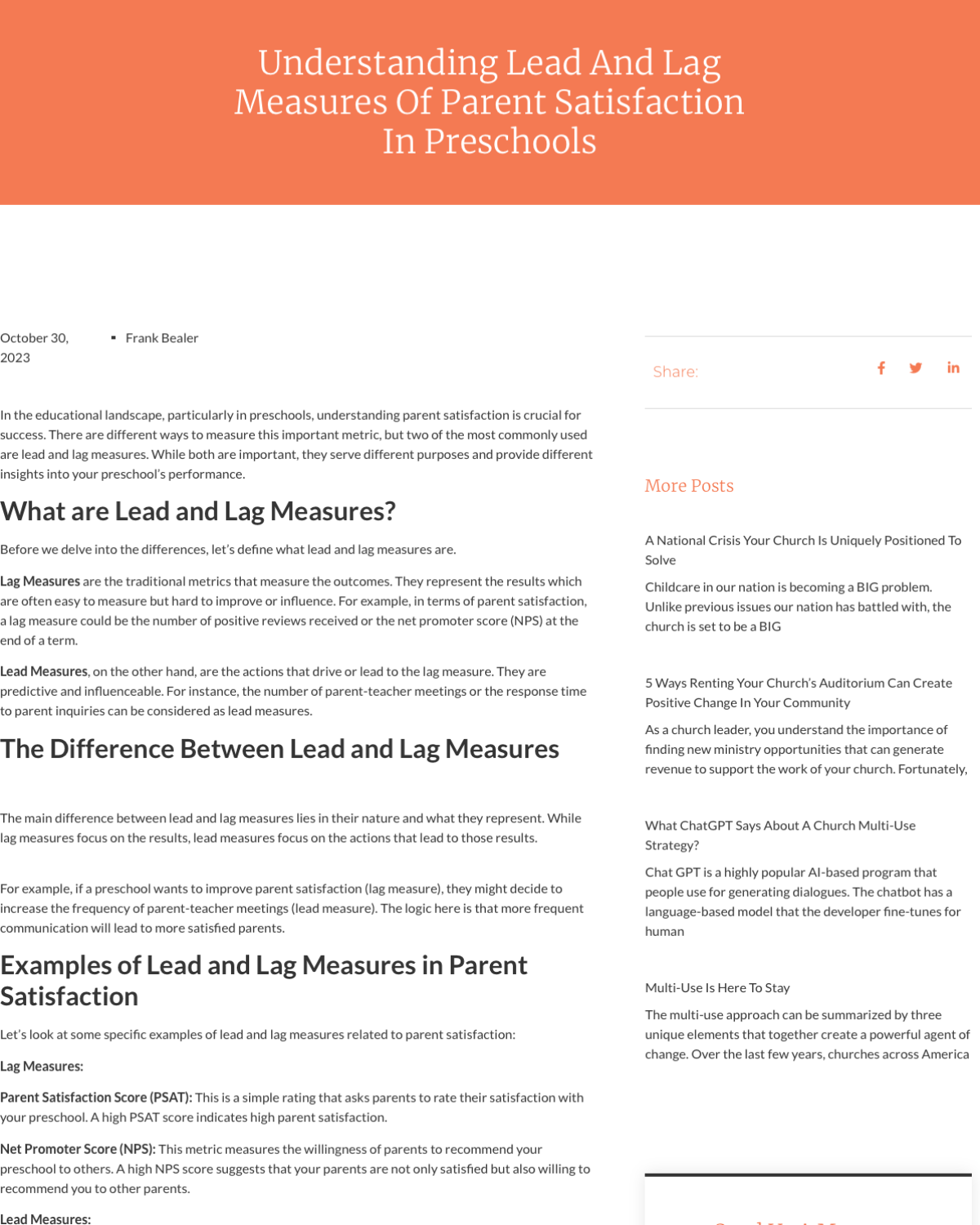In the educational landscape, particularly in preschools, understanding parent satisfaction is crucial for success. There are different ways to measure this important metric, but two of the most commonly used are lead and lag measures. While both are important, they serve different purposes and provide different insights into your preschool’s performance.
What are Lead and Lag Measures?
Before we delve into the differences, let’s define what lead and lag measures are.
Lag Measures are the traditional metrics that measure the outcomes. They represent the results which are often easy to measure but hard to improve or influence. For example, in terms of parent satisfaction, a lag measure could be the number of positive reviews received or the net promoter score (NPS) at the end of a term.
Lead Measures, on the other hand, are the actions that drive or lead to the lag measure. They are predictive and influenceable. For instance, the number of parent-teacher meetings or the response time to parent inquiries can be considered as lead measures.
The Difference Between Lead and Lag Measures
The main difference between lead and lag measures lies in their nature and what they represent. While lag measures focus on the results, lead measures focus on the actions that lead to those results.
For example, if a preschool wants to improve parent satisfaction (lag measure), they might decide to increase the frequency of parent-teacher meetings (lead measure). The logic here is that more frequent communication will lead to more satisfied parents.
Examples of Lead and Lag Measures in Parent Satisfaction
Let’s look at some specific examples of lead and lag measures related to parent satisfaction:
Lag Measures:
Parent Satisfaction Score (PSAT): This is a simple rating that asks parents to rate their satisfaction with your preschool. A high PSAT score indicates high parent satisfaction.
Net Promoter Score (NPS): This metric measures the willingness of parents to recommend your preschool to others. A high NPS score suggests that your parents are not only satisfied but also willing to recommend you to other parents.
Lead Measures:
Response Time: This is the time it takes for your team to respond to parent inquiries. Faster response times can lead to higher parent satisfaction.
Parent-Teacher Meetings: The frequency of meetings with parents can also be a lead measure. Regular meetings can make parents feel more involved and improve overall satisfaction.
In conclusion, while both lead and lag measures are important, they serve different functions. Lag measures help you understand the outcome, while lead measures help you understand the actions that can influence those outcomes. By focusing on improving your lead measures, you can directly impact your lag measures, leading to improved parent satisfaction. For preschools, this understanding can be a game-changer in driving growth and success.
Additional Lag Measures:
- Retention Rate: This measures the percentage of families who continue to enroll their child in your preschool year after year. A high retention rate is often an indicator of high parent satisfaction.
- Enrollment Rate: The number of new enrollments can also be a lag measure. If parents are satisfied with your preschool, they’re more likely to recommend it to others, leading to increased enrollments.
- Parent Feedback Surveys: Regular surveys can provide valuable feedback about parents’ satisfaction levels. Trends in these surveys over time can serve as a lag measure.
Additional Lead Measures:
- Family Events: The number of events held for families, such as family fun days or parent-child activities, can be a lead measure. More opportunities for parents to engage with the school community can lead to higher satisfaction.
- Communication Frequency: How often you communicate with parents (via newsletters, emails, or other channels) can also be a lead measure. Regular, transparent communication can improve parent satisfaction.
- Professional Development for Staff: The number of training hours or professional development opportunities provided to staff can be a lead measure. Well-trained and competent staff can deliver better education and care, leading to higher parent satisfaction.
Remember, lead measures are actions that can be controlled and directly impact the outcomes (lag measures). By identifying and focusing on the right lead measures, preschools can proactively manage their performance and drive improvement in parent satisfaction.
Frank


